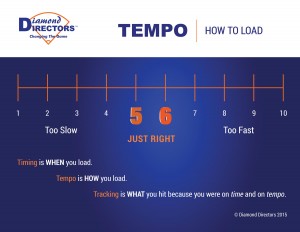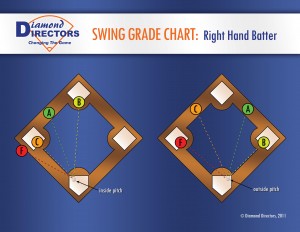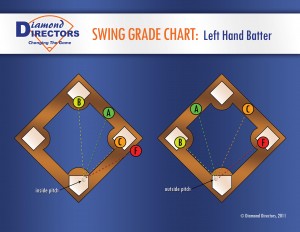It is the fall season (August-October). For my Diamond Directors clients, that can only mean one thing – it’s time to try new things to determine what works and what doesn’t. When you do, you can spend the winter (November-January) focusing on building habits and strength.
The months of August-October are the assessment phases of hitting. I also refer to this as the “tilling the ground” phase. During the planting season, farmers must till the ground before planting seeds. It’s the same for my hitters – before I begin teaching them new things, they must be assessed.
The swing consists of seven functional parts that must work together if you desire to be a successful hitter:
- Stance/Load
- Timing
- Tempo
- Tracking
- Approach
- Contact
- Extension/Finish
Here are three things every hitter must have assessed this fall:
No. 1 – Timing: When do I get ready?
Do you know what the word autonomy means? It means freedom from external control or influence. Coaches represent external control and influence. That’s why I give my hitters 100 percent autonomy in the fall. It helps them determine what works with their swing and what doesn’t.
I can try to teach them new stuff all day long, but if they believe their way works, they won’t try mine.
Timing is a crucial part of hitting and, this fall, you want to know when you must be loaded when facing above average, average and below average fastball pitchers. See this illustrations as a guide for being on time to track pitches to drive.
 You’ll know you’re on time when you are tracking varying pitch types, locations and speeds, followed by a short approach, hard contact and maximizing extension after the point of contact.
You’ll know you’re on time when you are tracking varying pitch types, locations and speeds, followed by a short approach, hard contact and maximizing extension after the point of contact.
If you aren’t on time, you must make adjustments quickly by doing something different from what you are doing.
I challenge you to be on time to track pitches at least 75 percent of the time.
Here’s a short breakdown of the pitchers you should face this fall in order to develop your hitting skills.
- 25 percent versus below average pitchers
- 25 percent versus average pitchers
- 50 percent versus above average pitchers
Tip of the Month – Core Training
Tempo – How do I get ready?
Being ready on tempo is a skill that can be mastered like landing an airplane. You have to want to do it, understand how to do it and practice it a lot (3,000 time to build a habit).
Tempo simply is how you get ready to hit. It can be too slow, just right and too fast. When your body is loading too slow and too fast, it makes it difficult to track pitches. It also affects your approach, contact, extension and finish phases of the swing. See this illustrations as a guide for being on tempo to track pitches to drive.
 Like timing, you know you’re on tempo when you’re tracking varying pitch types, locations and speeds, followed by a short approach, hard contact and maximizing extension after the point of contact.
Like timing, you know you’re on tempo when you’re tracking varying pitch types, locations and speeds, followed by a short approach, hard contact and maximizing extension after the point of contact.
If you aren’t on tempo, you must make adjustments quickly by doing something different from what you’re doing.
I challenge you to be on tempo to track pitches at least 75 percent of the time.
Approach – Where should the balls go?
If you’ve heard it once from a coach, be prepared to hear it a million times – “hit the ball where it is pitched.”
If you’re loaded on time this fall to track pitches, hitting the ball where it is pitched should be easy. Outside pitches should be hit opposite field; inside pitches should be pulled. The key is to hit the ball in the gaps between second base and shortstop at least 50 percent of the time this fall.
Hitting the ball in the gaps, regardless if it is a weak ground ball, line drive or lazy pop up, is an indication you have a short approach. See this illustrations as a guide for your approach when hitting pitches.

 The fall season is about determining what works and what doesn’t. The best coaches will put you in the lineup and give you autonomy to develop your swing during the fall assessment phase.
The fall season is about determining what works and what doesn’t. The best coaches will put you in the lineup and give you autonomy to develop your swing during the fall assessment phase.
The fall is a great time to fail forward.
Remember: Intelligence trumps being smart.
For more information, visit www.diamonddirectors.com today. Check out our digital magazine.
BIO
C.J. Stewart has built a reputation as one of the leading professional hitting instructors in the country. He is a former professional baseball player in the Chicago Cubs organization and has also served as an area scout for the Cincinnati Reds. As founder and CEO of Diamond Directors Player Development, CJ has more than 12 years of player development experience and has built an impressive list of clients, including some of the top young prospects in baseball today. If your desire is to change your game for the better, C.J Stewart has a proven system of development and track record of success that can work for you.

Leave a Reply